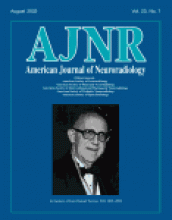Edited by Eward C. Benzel, MD. Rolling Meadows, IL: American Association of Neurological Surgeons; 2001. Price $150.00 with CD-ROM, 526 pages, 800 illustrations.
This is an important book. Under one cover, Dr. Benzel has amassed virtually all of the key elements required to understand, interpret, and treat spine instability. In an era of multi-authored texts, Dr. Benzel has written this entire book (32 chapters, 525 pages) himself, with outstanding assistance from his medical illustrator, Michael Norviel, CMI. Marvelously illustrated, succinctly written, and logically presented, this is a book that should be purchased by or readily available to every radiologist, particularly those who deal with a large spine surgery service.
Although the title Biomechanics of Spine Stabilization might make one think that the material is dull and not germane to the practice of radiology, the opposite is true. Do not expect to see high quality or numerous radiographic or MR imaging studies; in fact, if there is one criticism (and this is relatively minor, considering the overall quality of the book), it is the low resolution and questionable quality of a number of the presented x-rays. Also, statements such as “a high field (1.5 T) has better anatomic resolution but worse soft tissue injury definition sensitivity than a low field system (0.064 T)” is questionable and detracts somewhat from an otherwise credible book. These points notwithstanding, the value of this text lies in its ability to first explain, both in words and by diagrams, the forces at work in those abnormalities that result in spine instability and to then take the reader through various spinal constructs used to stabilize the spine. As I read this book, I realize that it contains information about which most radiologists are unaware, even when their daily work includes reading both pre- and postoperative spine images. This text reemphasizes that studying material in a field allied to imaging often provides greater insight than studying material in one’s own specialty.
The text logically starts with chapters on the anatomic structures of the spine, how they function biomechanically, and their kinematics. Each page contains information that can speak directly to film interpretation. A third chapter on spine stability (and instability) defines stability subjectively and then moves on to put instability on a more quantitative basis. The issue of “instability” has always seemed, to this reviewer at least, to be elusive. Ask a group of radiologists (or surgeons for that matter), to pin this concept down and to define when they would intervene and how they would intervene to stabilize the patient, and you are apt to get a myriad of answers. Well, in one succinct chapter, Dr. Benzel describes the classic concepts and his notions of stability/instability. The information is particularly valuable because these are questions raised on a daily basis in film reading. New terms, at least to this reviewer, present themselves throughout the text; for instance, we see the term glacial instability (no, not an unstable spine in Buffalo, New York) and the neutral zone (no, not a football term). Examples such as these and the point system for instability may be familiar to our colleagues but not to the majority of radiologists.
Other chapters are equally illuminating. Included among the chapters that will be of particular interest to radiologists are Degenerative and Inflammatory Diseases; Trauma, Tumor and Infection; Spinal Deformations; Neural Element Injury; and Spinal Fusion. Other chapters delve into surgical approach material for constructs, theories in instrumentation, reason for construct, and instrumentation failure. These chapters all have information that cannot be found in radiology texts but that impact on the daily interpretation of images. In the chapter dealing with spinal trauma, the line drawings help implant into one’s mind the mechanisms of injury; this section, as most other sections, can be appreciated in large part by viewing the imaging/drawings and reading the legends that accompany them. Throughout the book, do not expect to view many radiographs, CT scans, or MR images. This is acceptable because the intent of the author is to describe the biomechanical problems involved in the different processes, and imaging just does not convey that information.
As an unexpected but greatly appreciated bonus of buying this book is the inclusion of a CD that contains not the text itself but rather all the images. Dr. Benzel has encouraged the people who purchase this book-CD combination to freely use the images in any educational format they wish. The preface gives carte blanche from the publisher (the American Association of Neurological Surgeons) and Dr. Benzel’s permission for the free use of the material; this is a first, to my knowledge, and something for which Dr. Benzel should be congratulated.
In summary, radiologists, particularly neuroradiologists, are encouraged to purchase this text, either for themselves or for their departments.
- Copyright © American Society of Neuroradiology












